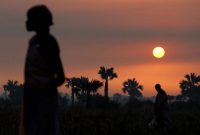
Investing in Climate Adaptation and Resilience as a Bulwark Against Conflict
Across the Horn of Africa, drought and flooding are displacing people and sharpening competition for land and water, risking conflict. In this excerpt from the Watch List 2022 – Autumn Update, Crisis Group urges the EU and its member states to increase funding for climate adaptation.
Investing in Climate Adaptation and Resilience as a Bulwark Against Conflict
Climate change is increasing the risk of conflict across the Horn of Africa. Intensified droughts and floods render land unusable, force people from their homes and compel them to compete for resources. They also raise the stakes in transboundary water disputes. The climate-conflict link is evident in Kenya, where four consecutive years of failed rains appear to be exacerbating ethnic tensions between farmers and herders jostling for access to scarce land and water.… Seguir leyendo »















